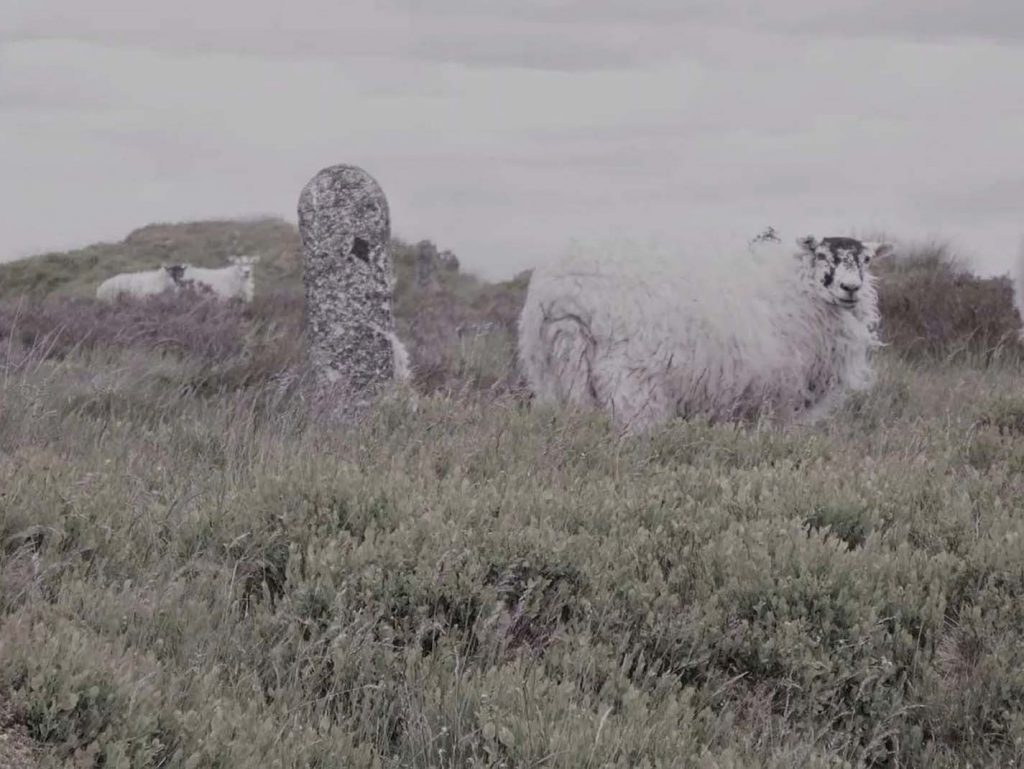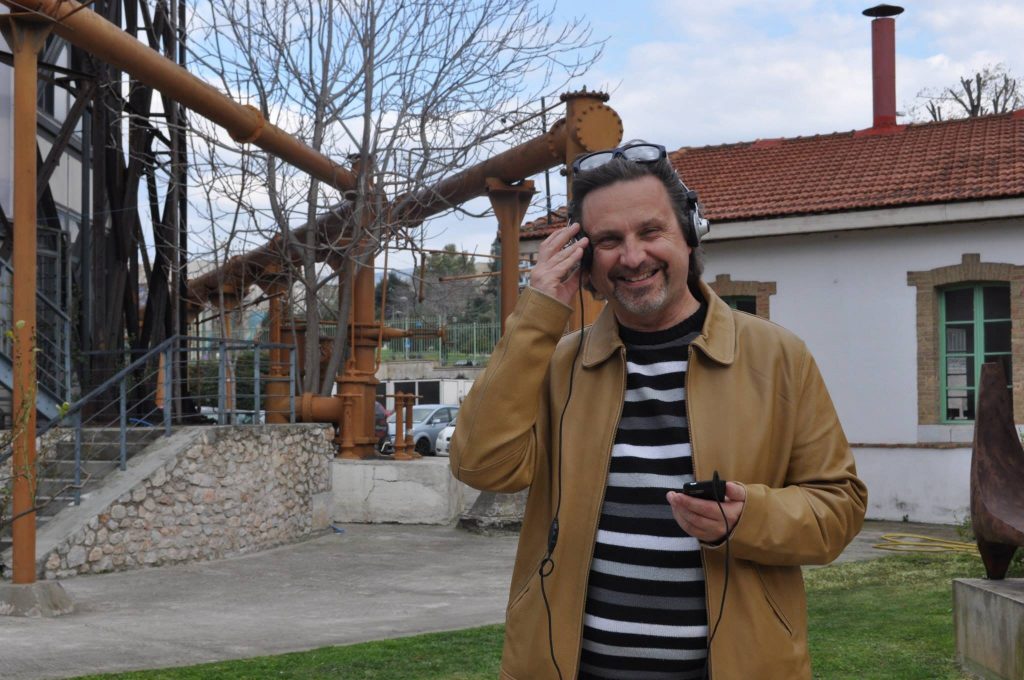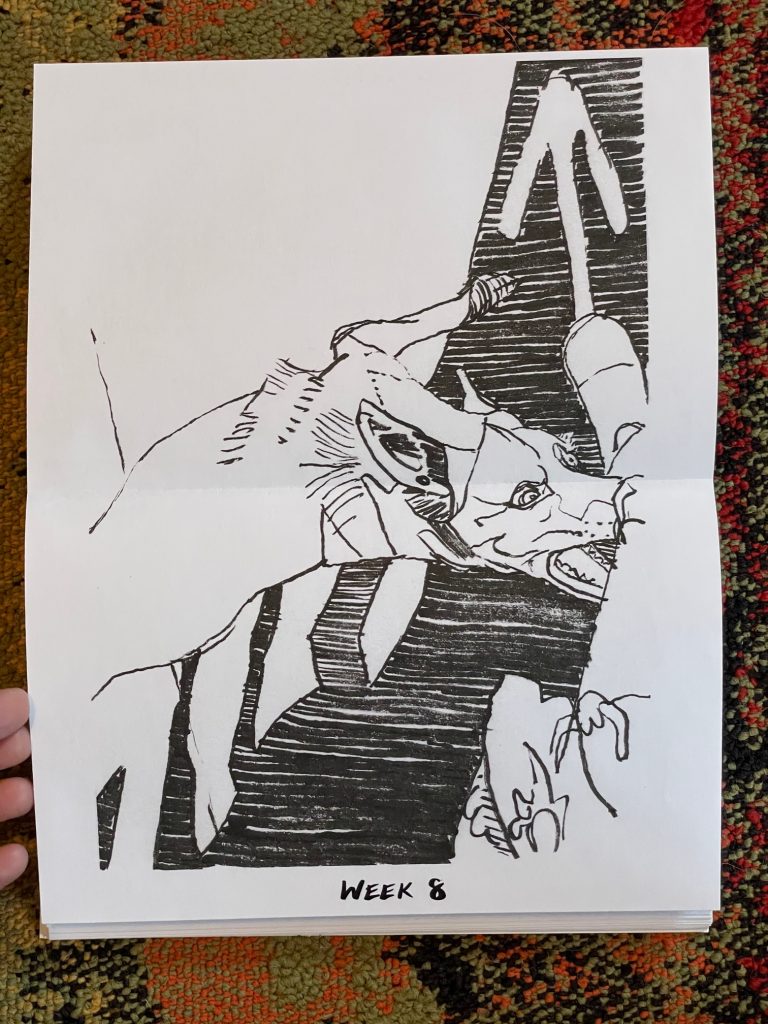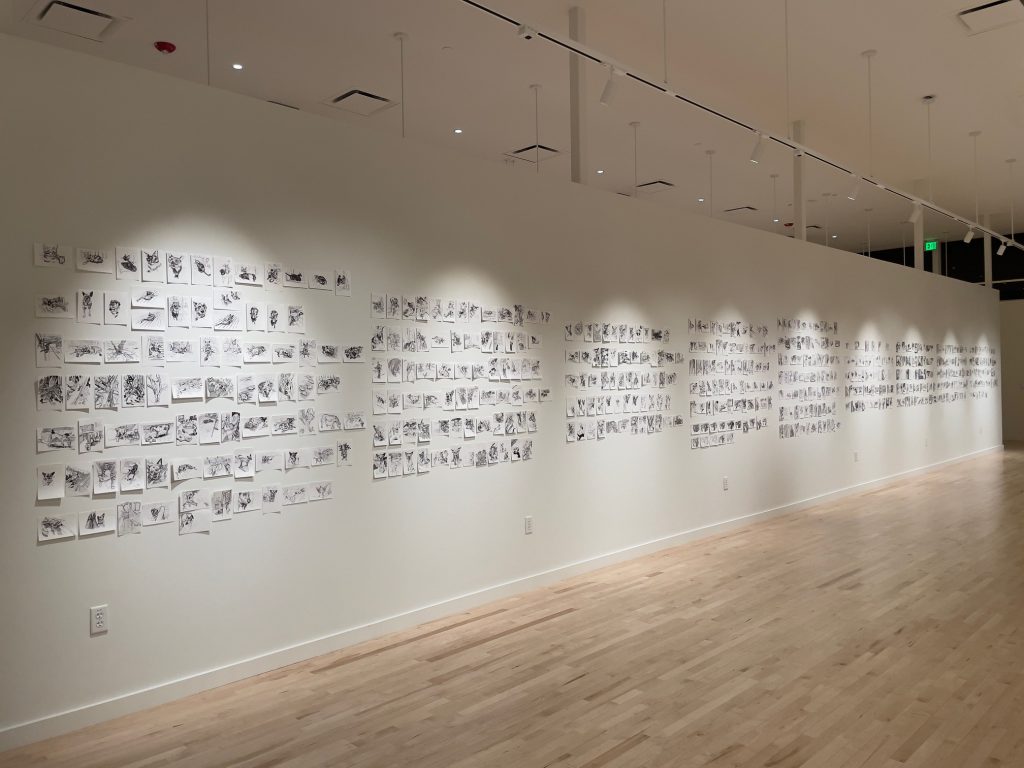
Michael x Ryan, “Roadstains #2: Multiple spill at Fulton and Peoria streets, Chicago, Fall 2005” (2005 – present) Wood relief with Finnish and Baltic Birch plywood and latex paint to match wall color; 102.0 x 220.0 x 10.0 inches
As part of the release of my book, Walking as Artistic Practice (pre-orders now open for softcover shipping in April!), I’m going to be publishing some brief interviews with the various artists, authors, researchers, creatives, collectives, and platforms whose art practice, written material, or other works I cite and mention.
My 21th interview in this series is with Michael x Ryan, a Chicago area based visual artist who recently moved to Woodstock, IL. He creates drawings and sculptural installations that focus on patterns made or discovered while traveling places lived and visited. Ryan attempts to record the fleeting residue of the human presence by realizing the interconnectedness of bodies and places while magnifying the minutia of a life lived.
EM: First, thank you for chatting with me about your work Roadstains (2007). I cite your work in chapter six (Rituals) in the subsection on “Commuting.” How would you describe the work for people who might not be familiar with it?
MxR: The Roadstains Series you mention in your book, consists of large-scale wood reliefs created by tracing actual stains on the street or sidewalk that remind me of a minimal surreal landscape. This required me to lay down sheets of plexiglass and, on my hands and knees, I would draw out the image onto the plexiglass while keeping in mind what drew me to the image as I was walking by it and over it many times, sometimes over a period of days.
This process was a spiritual ritual for me and it was easy to get lost in the movement of the line as I saw this process as walking the line. With some images that were in the street I would block off the area I was working on so I wouldn’t get hit by a car. This process was sometime an embarrassment to my then teenage children. Back in the studio I would trace the image onto tracing paper if I felt it was an image that spoke to me in a powerful way. I would then transfer the image onto 1/8 inch Finnish Plywood that I would then cut/draw with a Dremel tool.
The next step would be to decide what type of framing devise should be used for that specific image. These hand-cut plywood reliefs that become diptychs, triptychs and monoliths were then painted by studio assistants using a brushing system that I approved with latex house paint that was the color of the architectural environment that the works are installed in. Whenever possible I like to have someone else bring their energy to the skin of the piece as a type of community dialogue.
Individual or multiple works are then installed with sensitivity to the built environment and the day-to-day functions of the space in which it lives. In one Installation the work may be white to match the wall it is hung on and in another the same piece may be painted a red oxide color to match its environment.
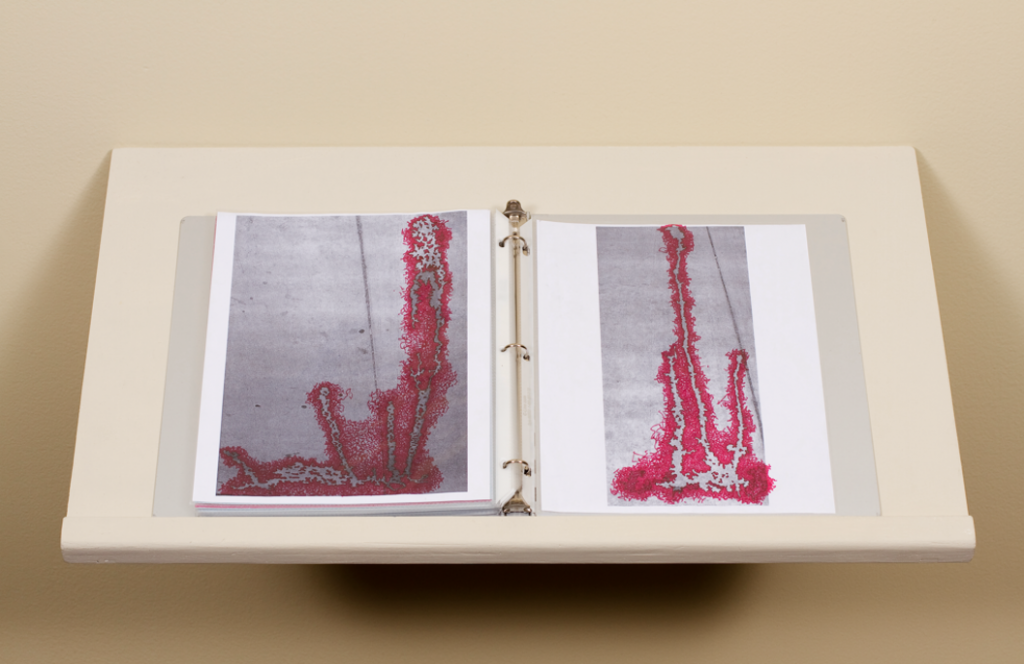
Michael x Ryan, Study drawings, ink on archival print | “Couple(d) on Damen near Evergreen (south and north)” Summer 2010
With the Chicago Roadstains Series, I would trace stains on the street and the final work would be the same scale. With the Wicker Park Roadstains Series that came afterwards, I would still search for images that remind me of a minimal surreal landscape that I can see myself walking through but instead of tracing the actual roadstain, I would collect these images on the street or sidewalk with a digital camera while on walks through my neighborhood. This approach to collecting stains on the street gave me the freedom to record interesting large-scale roadstains that would be in the middle of a high traffic area where I could not safely work with the image. In the studio the photographic image would be printed onto 8.5 x 11.0 inch archival paper where I would “draw out” the image that interested me in the stain with archival pens. These images would be the starting point for a series of small ink drawings on paper and small laser-cut drawings.
EM: What are your thoughts on walking as artistic practice?
MxR: For many years I have charted my lines of movement with a variety of journaling approaches, so the act and observation of grounding one’s body and movement as another way to experience our environment seems natural to me as a human being. This can be through walking, driving in a car and wondering if you will turn left, right or straight. When I was in my early 20s, I had a job mowing lawns for the largest trailer park in the east coast which required me to sit on a riding lawnmower all day cutting around over 500 trailers per week. The patterns of movement were never the same and I would visualize myself from above being aware of the patterns I was making and why. This experience changed how I viewed my place in the world.
I saw this movement as an act of drawing where you can get lost in the emotion of the act. The movement of a body is how we experience the world and ourselves so to me acknowledging this is equal to any performative medium we choose to use when we choose to create to understand what is hidden to us.
EM: Can you tell us about any recent or upcoming projects you are excited about?
MxR: The previous owners of the property my family purchased in Woodstock, IL had to have this very sick magnificent oak tree cut down to around 24 feet with many of the limbs laying on the ground like wounded soldiers. Buckthorn and drought may have been too much for the wise one which now looks like a monument to extreme environmental stress. For the last year and a half, I have been working on a series of drawings called Amputated Wise Oak of Woodstock that up to now consists of different approaches of drawings while starting to work on more sculptural works.

From January to May 2021, I was in a group exhibition called Sustainable Societies for the Future at the Malmo Art Museum in Malmo, SE. The exhibition project Sustainable Societies for the Future springs from one of the most complex and urgent challenges of our day: how to create safe, inclusive, and sustainable societies. Twenty-four artists and artist groups contributed works to the exhibition that in different ways encouraged dialogue and engagement with sustainability issues of local and global urgency.
From October 15-17 2021, I was in a version of the exhibition presented at the Malmö Konstmuseum, Sustainable Societies for the Future : Chicago Edit, that included work engaging with the following questions: How do we make societies more inclusive, safe, resilient and sustainable with all of the challenges we are facing today regarding climate, social inequality and the world’s growing population? And how can we accumulate change through art that explores collectiveness and social engagement for a better future together?
The second edition, which includes artists presented in the first exhibition in Sweden, was curated by the Floating Museum and used an LED truck as the exhibition platform and moved through the city over a period of three days. The exhibition presented a program that was mobile and investigated urban landscape, social geography and created juxtapositions and complimentary moments between streetscape and the Nordic and American artist contributions.
Participating Artists /
Christian Falsnaes (DK), Max Guy (US), Minna Henriksson (FI), Hesselholdt & Mejlvang (DK), Ingela Ihrman (SE), Toril Johannessen (NO) & Marjolijn Dijkman (NL), Cheryl Pope (US), Wang & Söderström (SE/DK), Amanda Williams (US), and Michael x Ryan (US).
Curated by the Floating Museum (Faheem Majeed, Andrew Schachman, Jeremiah Hulsebos-Spofford, and Avery R. Young, US).

